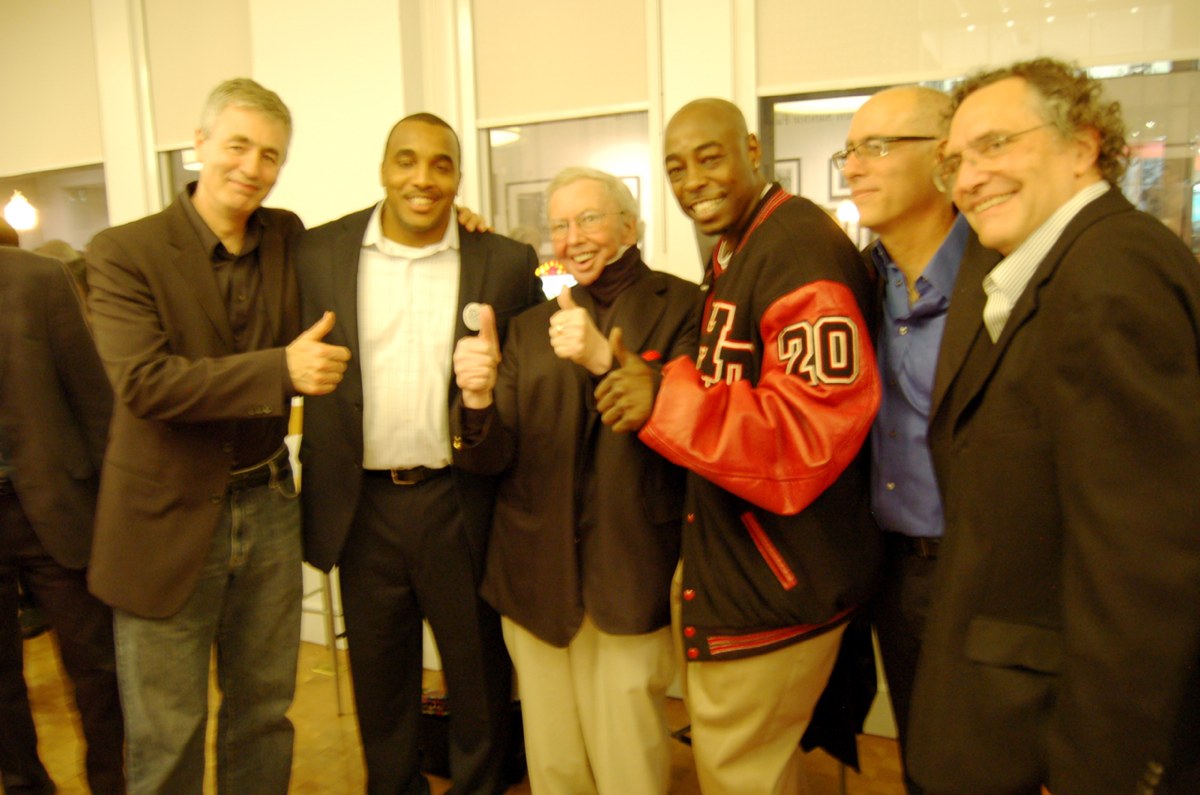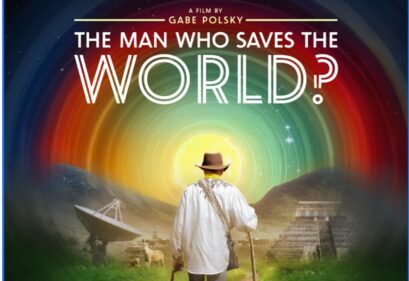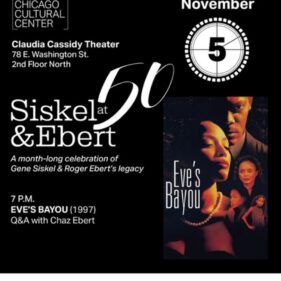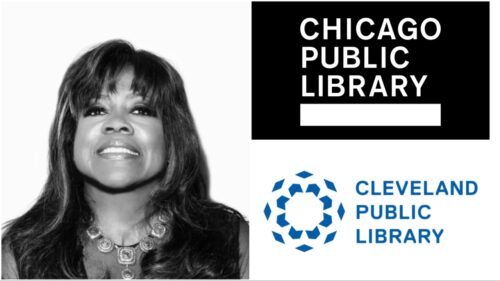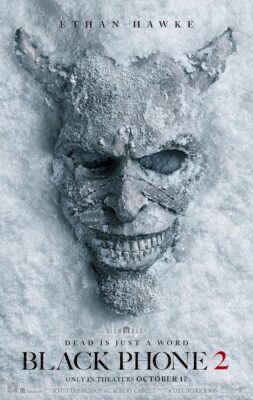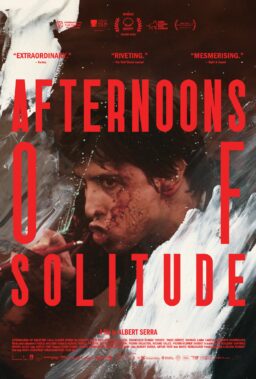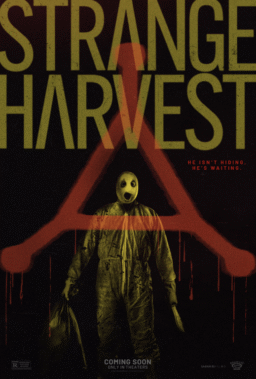Roger was a tireless advocate for the films he loved. Sometimes, that gave an already-recognized film a little extra boost. Sometimes his praise saved the day for a movie that might otherwise have vanished without a trace.
Here are eight films whose fates were profoundly shaped by Roger’s reviews.

“My Dinner with Andre.” (1981; written by Andre Gregory and Wallace Shawn; directed by Louis Malle.)
Roger named this hothouse drama about old friends having dinner as one of his favorite films of the 1980s. Throughout the early ’80s, he mentioned it so often in his newspaper writing and on his show with Gene Siskel (who also adored it) that his boosterism became an affectionate shared joke amongst cinephiles. “I’ve never seen a film like this, and I’m not sure there ever could be another film like this,” he said in his original 1981 TV review.
In a 1999 piece revisiting the film, Roger wrote, “Someone asked me the other day if I could name a movie that was entirely devoid of clichés. I thought for a moment, and then answered, ‘My Dinner With Andre.’ Now I have seen the movie again; a restored print is going into release around the country, and I am impressed once more by how wonderfully odd this movie is, how there is nothing else like it. It should be unwatchable, and yet those who love it return time and again, enchanted.”
The only person more enthusiastic about “My Dinner With Andre” is Corky St. Clair of “Waiting for Guffman,” who in the film’s closing section, proudly shows off his themed action figures.

“Halloween.” (1978; written by Debra Hill; directed by John Carpenter.)
Roger Ebert and Gene Siskel both objected to many of the slasher pictures that became popular in the 1970s and ’80s. They felt such films treated teenagers as so much meat to be hacked up for the audience’s amusement, and were especially thoughtless in turning women’s ingrained fear of violation into a voyeuristic spectacle aimed at leering men. They made an exception for John Carpenter’s breakthrough movie “Halloween“, though, praising it on their show as a cagey modern successor to Alfred Hitchcock’s “Psycho,” and hailing the director as a major talent. Roger in particular kept returning to the film. He kept finding new things to say about its themes and techniques, appreciating it as one might a piece of music.
“There is a difference between good and scary movies and movies that demean half the human race,” Roger said, discussing “Halloween” on “Sneak Previews,” an early incarnation of his show with Gene. “There is a difference between movies that are violent but entertaining, and movies that are gruesome and despicable. There is a difference between a horror movie and a freak show. And a good example of that is that both of us gave favorable reviews to a very scary 1978 film called ‘Halloween.’ ”
“It’s easy to create violence on the screen,” he wrote in 1979, “but it’s hard to do it well. Carpenter is uncannily skilled, for example, at the use of foregrounds in his compositions, and everyone who likes thrillers knows that foregrounds are crucial: The camera establishes the situation, and then it pans to one side, and something unexpectedly looms up in the foreground. Usually it’s a tree or a door or a bush. Not always. And it’s interesting how he paints his victims. They’re all ordinary, everyday people — nobody’s supposed to be the star and have a big scene and win an Academy Award. The performances are all the more absorbing because of that; the movie’s a slice of life that is carefully painted (in drab daylights and impenetrable nighttimes) before its human monster enters the scene.
“We see movies for a lot of reasons. Sometimes we want to be amused. Sometimes we want to escape. Sometimes we want to laugh, or cry, or see sunsets. And sometimes we want to be scared. I’d like to be clear about this. If you don’t want to have a really terrifying experience, don’t see ‘Halloween.'”

“Chan is Missing.” (1982; written and directed by Wayne Wang.)

“”Chan is Missing’ is a small, whimsical treasure of a film that gives us a real feeling for the people of San Francisco’s Chinatown. And at some point while we’re watching this film, we may realize that we have very little idea of Chinatowns, in San Francisco or elsewhere, that haven’t been shaped by mass-produced Hollywood cliches like the Charlie Chan movies. The title ‘Chan is Missing’ is almost a pun, because Charlie Chan is missing from this film, and what replaces him is a warm, low-key, affectionate and funny look at some real Chinese-Americans.” […] “Chan is Missing” has already become something of a legend because of the way it was filmed. The movie’s director, producer, editor and co-author is a young filmmaker named Wayne Wang, a 33-year-old San Franciscan who made the movie on a $22,000 budget, with a little help from his friends. He wanted to examine the ways in which Chinatown was both Chinese and American — and who would be better qualified to do that than a director whose last name is Chinese and whose first name was inspired by John Wayne?”
Roger’s TV reviewing partner Gene Siskel was also a fan of “Chan is Missing.” The two gave the picture a rave review on “Sneak Previews” in 1982 — exposing a then-spottily released indie to a national audience, and spurring bookings in theaters that might not otherwise have given such a tiny film a second thought. Roger and Gene’s discussion can be seen in the clip below, at the 4:11 mark. “Maybe the first film I’ve ever seen about contemporary Chinese-Americans,” Gene said in his introduction. Such films are nearly as rare now as they were then, when Siskel and Ebert had their own movie review show, and used it to nourish films that might have withered without their attention.

“Hoop Dreams.” (1993; directed by Steve James.)

Gene Siskel and Roger Ebert didn’t just champion this documentary about struggling Chicago high school basketball players and their families; they gave it the lead slot on their January 22, 1994 edition of “At the Movies” in advance of its debut at the Sundance Film Festival. They had never before led with a documentary that hadn’t been commercially released. This audacious move was one of the greatest examples of influential critics using the bully pulpit of their platform to force their colleagues, and the entertainment industry itself, to pay attention to work they might have otherwise ignored.
Suddenly anyone who was thinking of skipping “Hoop Dreams” at Sundance had to see it, if only to see what Roger and Gene were so stoked about. Exhibitors were intrigued enough to wonder if they could exploit Siskel and Ebert’s passion and sell tickets to a documentary about people nobody had heard of, by filmmakers who weren’t names.
Here’s a clip of Siskel and Ebert’s first televised review of “Hoop Dreams”:
Roger and Gene discussed “Hoop Dreams” again in the February 18, 1995 broadcast of “At the Movies,” breathing fire on the Academy of Motion Picture Arts and Sciences for failing to nominate it as Best Documentary.
Roger told Gene that he’d discussed the snub with acclaimed documentary filmmaker Barbara Kopple (“American Dream”), and she’d told him the committee was “in love with talking heads and stock footage, and that’s exactly what they are, these old fashioned television-oriented films, with battleships bombing the beaches at Normandy while some deep-voiced announcer talks about how many troops went ashore. They are not interested in living, breathing documentaries.”
Roger went on to attack the documentary committee’s yearly ritual of nominating competent but unexciting pictures that just happened to be made by someone who’d served on previous nominating committees. ‘If you go back year after year and look at the nominees,” he said, “you’ll find one or two nominees that are fishy because the people that manipulate the committees are trying to get their pictures nominated.” Nothing’s changed, alas — but at least now we know.
“No screenwriter would dare write this story,” Roger wrote in his Chicago Sun-Times review. “It is drama and melodrama, packaged with outrage and moments that make you want to cry. ‘Hoop Dreams’ has the form of a sports documentary, but along the way it becomes a revealing and heartbreaking story about life in America.”

“Fargo” (1996; written by Joel and Ethan Coen; directed by Joel Coen.)
Although the Coen brothers were well-established filmmakers by the time “Fargo” came out, and the film got generally positive notices in advance of its national release, Roger’s tireless championing helped establish it as a heavyweight work, both outrageously funny and morally serious. His insight into the movie’s world view minimized the possibility that critics might dismiss it as a snowbound rehash of their debut film “Blood Simple,” which likewise concerned hapless criminals whose conspiracy falls apart mainly due to stupidity, greed and bad luck. Here’s his 1996 TV review from “At the Movies,” trading superlatives with Gene:
Roger makes his points even more forcefully in his Sun-Times review, arguably one of his most concise summations of a movie’s achievements: “‘Fargo’ begins with an absolutely dead-on familiarity with smalltown life in the frigid winter landscape of Minnesota and North Dakota. Then it rotates its story through satire, comedy, suspense and violence, until it emerges as one of the best films I’ve ever seen. To watch it is to experience steadily mounting delight, as you realize the filmmakers have taken enormous risks, gotten away with them and made a movie that is completely original, and as familiar as an old shoe – or a rubbersoled hunting boot from Land’s End, more likely.” The film went on to become one of the Coens’ most financially successful films. It was nominated for seven Academy Award and won two, for actress (Frances McDormand) and original screenplay.

“Dark City.” (1998; written by Lem Dobbs and David S. Goyer; directed by Alex Proyas.)

It’s likely that this visually sumptuous puzzler might have come and gone without notice had Roger not continually praised it in the year following its release — and beyond. “Dark City” appealed to the science fiction-reading kid in Roger that responded to science fiction that imagined its world completely. He had even more passion for tales with a strong philosophical or moral framework, that discussed problems of consciousness, perception and evolution through metaphor. Roger called “Dark City” a stealth masterpiece right out of the gate, and later elevated it into the pantheon of his Great Movies.
“‘Dark City’ by Alex Proyas resembles its great silent predecessor ‘Metropolis’ in asking what it is that makes us human, and why it cannot be changed by decree,” Roger wrote. “Both films are about false worlds created to fabricate ideal societies, and in both the machinery of the rulers is destroyed by the hearts of the ruled. Both are parables in which a dangerous weapon attacks the order of things: a free human who can see what really is, and question it. ‘Dark City’ contains a threat more terrible than any of the horrors in ‘Metropolis,’ because the rulers of the city can control the memories of its citizens; if we are the sum of all that has happened to us, then what are we when nothing has happened to us?”

“Monster.” (2003; written and directed by Patti Jenkins.)
Charlize Theron, the star of “Monster,” might owe her Best Actress Oscar to Roger Ebert, more so than any single person not directly associated with the film.

Although her work won awards near the end of 2003, there was also critical backlash to the effect that it was mostly a triumph of makeup. There were also gripes that the performance was a redneck caricature, or too actressy, or that all the acclaim was mainly due to the fact that a conventionally beautiful Hollywood starlet had uglified herself for a gritty dramatic role.
Roger did his best to demolish these charges, making a case for Theron as a brilliant actor giving a performance of great intelligence and compassion.
“What Charlize Theron achieves in Patty Jenkins’ “Monster” isn’t a performance but an embodiment,” he wrote. “With courage, art and charity, she empathizes with Aileen Wuornos, a damaged woman who committed seven murders. She does not excuse the murders. She simply asks that we witness the woman’s final desperate attempt to be a better person than her fate intended.”
He goes on: “Aileen’s body language is frightening and fascinating. She doesn’t know how to occupy her body. Watch Theron as she goes through a repertory of little arm straightenings and body adjustments and head tosses and hair touchings, as she nervously tries to shake out her nervousness and look at ease. Observe her smoking technique; she handles her cigarettes with the self-conscious bravado of a 13-year-old trying to impress a kid. And note that there is only one moment in the movie where she seems relaxed and at peace with herself; you will know the scene, and it will explain itself. This is one of the greatest performances in the history of the cinema.”

“Juno” (2007; written by Diablo Cody; directed by Jason Reitman.)

This quirky comedy was already shaping up as a breakout hit when Roger reviewed it; but it also seemed at risk of being written off as an art-house trifle, thanks to critics blasting the film’s arch dialogue and dicey sexual politics. Roger embraced the movie wholeheartedly, calling it his favorite film of 2007 and “just about the best movie of the year.”
“After three viewings, I feel like I know some scenes by heart, but I don’t want to spoil your experience by quoting one-liners and revealing surprises,” he wrote. “The film’s surprises, in any event, involve not merely the plot but insights into the characters, including feelings that coil along just beneath the surface so that they seem inevitable when they’re revealed. The film has no wrong scenes and no extra scenes, and flows like running water. There are two repeating motifs: the enchanting songs, so simple and true, by Kimya Dawson. And the seasonal appearances of Paulie’s high school cross-country team, running past us with dogged consistency, Paulie often bringing up the rear, until his last run ends with Paulie, sweaty in running shorts, racing to Juno’s room after her delivery.”
For more birthday articles, see Roger’s Birthday: Table of Contents.

